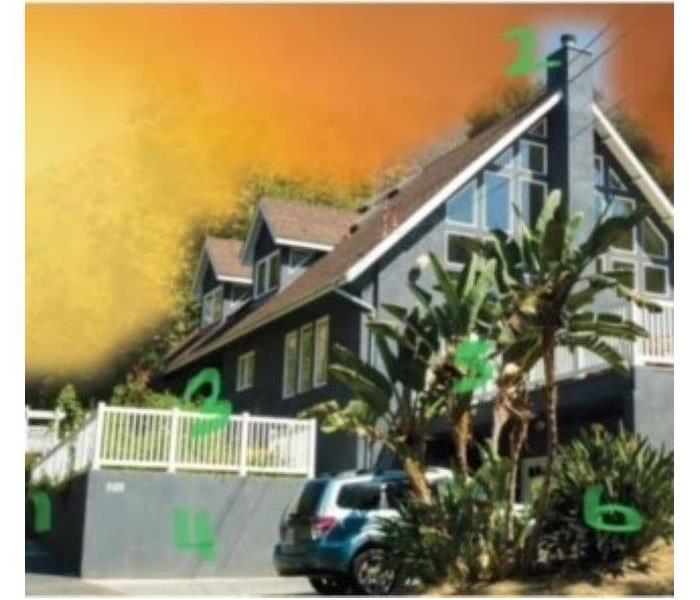Wildfire: Be Prepared
5/24/2021 (Permalink)
Safeguard or “Harden” Your Home The ability of your home to survive a wildfire depends on its construction materials and the quality of the “defensible space” surrounding it. Here's a list of things to keep in mind if you live near a wildfire area.
1. Address
• Make sure your address is clearly visible from the road.
2. Chimney
• Cover your chimney and stovepipe outlets with a nonflammable screen of ¼-inch wire mesh or smaller to prevent embers from escaping and igniting a fire.
• Make sure that your chimney is at least 10 feet away from any tree branches.
3. Deck/Patio Cover
• Use heavy timber or non-flammable construction material for decks and patio covers. • Enclose the underside of balconies and decks with fire-resistant materials to prevent embers from blowing underneath.
• Keep your deck clear of combustible items, such as baskets, dried flower arrangements, and other debris.
• The decking surface must be ignition-resistant if it’s within 10 feet of the home.
4. Driveways and Access Roads
• Driveways should be designed to allow fire and emergency vehicles and equipment to reach your home.
• Access roads should have a minimum 10-foot clearance on either side of the traveled section of the roadway and should allow for two-way traffic. • Ensure that all gates open inward and are wide enough to accommodate emergency equipment.
• Trim trees and shrubs overhanging the road to a minimum of 13-½ (or 13.5) feet to allow emergency vehicles to pass.
5.Garage
• Have a fire extinguisher and tools, such as a shovel, rake, bucket, and hoe, available for fire emergencies.
• Install a solid door with self-closing hinges between living areas and the garage. Install weather stripping around and under the doors to prevent ember intrusion.
• Store all combustibles and flammable liquids away from ignition sources.
6. Home Site and Yard
• Ensure you have at least a 100-foot radius of defensible space (cleared vegetation) around your home. This means looking past what you own to determine the impact a common slope or neighbor’s yard will have on your property during a wildfire.
• Cut dry weeds and grass before noon when temperatures are cooler to reduce the chance of sparking a fire.
• Landscape with fire-resistant plants that are low-growing with high-moisture content.
• Keep woodpiles, propane tanks, and combustible materials away from your home and other structures, such as garages, barns, and sheds.
• Ensure trees are far away from power lines.





 24/7 Emergency Service
24/7 Emergency Service